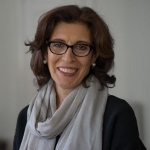Between Word and Image: Safavid Visual Culture in the 16th and 17th century
-
|
13 Jan
15 Jan
2020
|
Islamic Aesthetics
|
|
Massumeh Farhad
|
Image: Feridun Strikes Zahhak with the Ox-Headed Mace. Folio from the Shahnama (Book of kings). Iran, Tabriz, ca. 1525. Opaque watercolor, ink, and gold on paper. Freer Gallery of Art F1996.2
The lectures will examine Safavid visual culture, in particular the arts of book, in Tabriz, Qazvin, Isfahan, and Mashhad during the sixteenth and seventeenth centuries. It will focus on some of the outstanding illustrated literary texts, illuminated Qur’ans, and albums (murqqa’) as well as related objects. The aim is to offer an overview of Safavid artistic production and its patronage and place it in a broader historical and cultural context. Particular attention will be devoted to the rise of a new class of patrons outside the court and their role in the formation of a Safavid aesthetic and its dissemination.
Day 1 : Tabriz and Ardabil: Production of Safavid Royal Manuscripts
Day 2 : Qazvin and Shiraz: Arrival of the Millennium
Day 3 : Isfahan and Mashhad: Towards a New Aesthetics
Duration -
January 13, 14, 15, 2020
Timing: 6:30 - 8:30
Fees
Rs. 3,000
Registrations Closed

Massumeh Farhad
Massumeh Farhad joined the Freer Gallery of Art and Arthur M. Sackler Gallery in 1995 as Associate Curator of Islamic Art. In 2004, she was appointed Chief Curator and Curator of Islamic Art and since 2019, she has served as Interim Deputy Director for Collections and Research. She is a specialist in the arts of the book from sixteenth- and seventeenth- century Iran. Farhad has curated numerous exhibitions on the arts of the Islamic world at the Freer and Sackler, including Art of the Persian Courts (1996), Fountains of Light: The NuhadEs-Said Collection of Metalwork (2000), Love and Yearning: Mystical and Moral Themes in Persian Painting (2003), Style and Status: Imperial Costumes from Ottoman Turkey (2005-6), The Tsars and the East: Gifts from Turkey and Iran in the Moscow Kremlin (2009), Falnama: The Book of Omens(2009- 10) and The Art of Qur’an: Treasures from the Museum of Turkish and Islamic Art (2016-17).
She received her Ph.D. in Islamic Art History from Harvard University in 1987 and has written extensively on seventeenth-century Persian painting, co-authored Slaves of the Shah: New Elites in Safavid Iran (2004) and Falnama: The Book of Omens (2009), and The Art of Qur’an: Treasures from the Museum of Turkish and Islamic Art (2016).